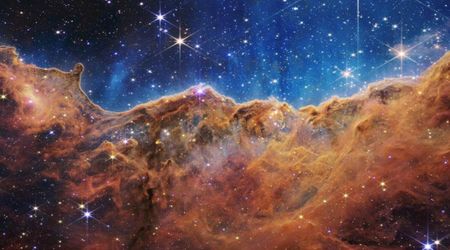Whirlpool Galaxy

Of all the countless island universes scattered across the sky, none seem as exciting as M51, the renowned Whirlpool Galaxy. Once believed to be a great swirling nebula, M51 is now known to be the finest example of a face-on spiral galaxy.
Only 22 million light-years distant, this picturesque pinwheel of stars, dust, and gas measures about 65,000 light-years across and shines with the luminosity of 10 billion suns.
One of Charles Messier’s original discoveries, M51 was the first galaxy in which a spiral structure was noted, by Lord Rosse with his giant 6-foot reflector at Parsonstown, Ireland, in 1845. The discovery of the spiral pattern aroused much interest at the time and was widely regarded as a confirmation of the Nebular Hypothesis proposed by the French mathematician Pierre Simon de Laplace, who postulated that our solar system condensed out of a rotating gaseous nebula. This notion of “spiral nebulae” being solar systems in the process of formation was not shattered until 1923, when astronomers recognized the spiral nebulae as external galaxies, and the modern picture of the Universe began to emerge.
The Whirlpool, just a few degrees southwest of 2nd-magnitude Eta Ursae Majoris, the end star in the Dipper’s handle, is visible as a hazy patch even in binoculars. From dark, clear sites, high-quality 6- to 8-inch telescopes will readily show M51’s graceful arms arcing around its bright central core. Larger instruments will bring out the galaxy’s dark lanes and bright H II regions that dot its spiral arms.
Don’t overlook M51’s companion, NGC 5195, which apparently Messier did when he observed M51 in 1773. Conspicuous in the small telescope, this satellite system gives the appearance of being attached to the north spiral arm of M51. This bridge between the two galaxies is actually an optical illusion – a spiral arm of M51 is superimposed on NGC 5195 with NGC 5195 actually lying on the far side of M51 (by perhaps 1/2 million light years), although the two galaxies have had one or more close encounters in the past.
Gravitational interaction with NGC 5195 is thought to be triggering enhanced star formation in M51, at a rate of about five new stars each year. This is similar to the number forming per year in the Milky Way, but note that our galaxy has a mass about 10 times that of M51.









